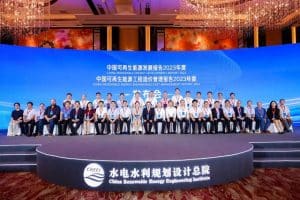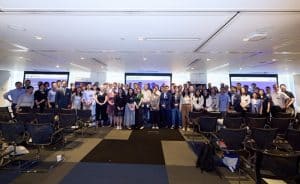Philanthropy Infrastructure and Support Organizations
”The more understanding of the value of the sector we cultivate, the less this challenge will be for organizations like us. This is why WINGS is so important, as it made its mission to make the case for philanthropy infrastructure at the global level.” –Masha Chertok, CAF Russia
We don’t often notice infrastructure. From the roads that get you to the meetings you have to attend, to the cell towers that allow you to place your personal calls, when evaluating the state of society’s productiveness, we don’t often acknowledge infrastructure as an obvious contributor to success.
You can find this same pattern in philanthropy. Who helps to advise how to get aid money to obscure places in need of resources? How do we link donor interests to grantees effectively? What resources exist to educate people in power about making socially conscious decisions regarding giving? Who guides a region, organization, or donor on how to develop philanthropically? As part of WINGS’ May Spotlight on Philanthropic Support Organizations (PSOs), we spoke with WINGS Members to talk about their experiences in the field.
PSOs look different from country to country. We find that some regions’ PSOs benefit from long-standing civil-society support for philanthropy, while others are emerging from or experiencing more disabling environments. There can be challenges:
“…encouraging an enabling environment for community philanthropy as a key underpinning to development in the country, building an active citizenry that understands their rights but also responsibilities in leading their own development (assets orientation to development) and holding key spaces that cohere multi-sector energies and interests (government, corporate, community, funding sources and other)”
-Shaun Samuels, TSDP
PSOs can help both empower local philanthropic initiatives by leading the dialogue in the field and reach those initiatives through their influence and prominence. Organizations like the GlobalGiving Foundation vets then connects nonprofits around the world to donors who might otherwise not have funding access to these, sometimes obscure, regions and causes. Elsewhere, organizations like China Development Brief help educate the international world on their national philanthropic landscape by providing translations of laws that affect the third sector within China.
WINGS PSOs are varied in their activity. Some specialize in advising, some work in advocacy, others train, some are solutions hubs, but all support philanthropy, and many times, from behind the scene. This creates challenges for PSOs. Of our members interviewed, they agreed that a lack of awareness for the importance of PSOs is the greatest challenge to their organization.
“I think the most fundamental challenge is [the] lack of understanding of the value support organizations produce. In our culture, even NGOs that directly serve disadvantaged groups or do other pretty obviously useful work face misunderstanding and lack of trust, let alone species like us who do not teach or feed or provide shelter.”
-Masha Chertok, CAF Russia
China Development Brief’s Yimei Chen points out that there exists a lack of funding resources for PSOs. The end result of PSO- work isn’t always as tangible as projects that provide housing to the homeless or education-access to the disadvantaged.
“Support organisations do not easily get funded since the roles are about facilitating conversation in the field, convening meetings with different organisations and sectors around key philanthropy imperatives, research on demand of issues that face the field and other.”
-Shaun Samuels, TSDP
To increase organizational sustainability, many organizations charge their users, which can also present a challenge.
“Philanthropists expect to get advice without paying for it as they are used to such ‘free’ advice as provided by their legal or financial advisors.”
– Atallah Kuttab, SAANED
So, where do these challenges leave PSOs whose benefits are not clearly seen or appreciated? Below, we want to share with you some diverse projects are members have been or are engaged in.
CAF Russia
“Our project of the year 2016 is #GivingTuesday – is a campaign that is run in a number of countries around the globe to strengthen the local culture of giving and engage more people in doing good. We are planning a big campaign that will involve hundreds of NGOs, companies and other partners and aim to make it an all-country festival celebrating giving. We are very excited about it and very happy to learn from colleagues from other countries to make it a big success.” – Masha Chertok
China Development Brief
Of the services CDB offers, their translations of Chinese laws into English help make the philanthropic landscape of China more accessible to those outside the country. Recently, CDB translated two China Charity Law drafts and the final China Charity Law as well as the new law The People’s Republic of China’s Law on the Management of the Activities of Overseas NGOs within Mainland China.
Global Giving
“With the launch of GG Rewards, GlobalGiving has aligned funding with performance. The more an organization learns, the more visible it becomes within the GlobalGiving marketplace, and the more funding flows to that organization. GlobalGiving makes it possible for foundations to find and fund locally-led nonprofits that have demonstrated a commitment to effectiveness.” –John Hecklinger
TSDP-Technical Support and Dialogue Platform
TSDP, an initiative of SGS Consulting, is a support organization that has assisted membership associations. Recently, they were part of the initiative to bring technical and strategic support to African Philanthropy Network (APN). TSDP is assisting APN with membership development, expansion, developing a value proposition for the new expanded membership base and managing a continental consultation process by visiting each region. TSDP has also offered their support to the African Community Grantmakers Leadership Forum (SACGLF). Here, TSDP worked to help rebuild the forum through strategy development and contributed to resource mobilisation. Now, TSDP is helping Forum with processes relating to research, regional and continental positioning of the forum, and membership expansion.
SAANED
“SAANED led a dialogue in the last five years to answer three key questions, namely:
1) What are the characteristics that make a good philanthropy organization?
2) What should an Arab Foundation Law include for a conducive supportive environment?
3) How to measure the impact of the programs undertaken by philanthropy organizations?
The results of those dialogues are well documented on SAANED website. However, what is important is that the convening of the main key mind makers in the field to discuss the above topics, came up with results and criteria that are relevant to the daily challenges we face in our work in an effort to define best practices that practitioners relate to and not alien or imported from other countries that sometimes can be limiting and not relevant. Additionally, it raised awareness of the need for accountability and self-regulation by putting an effort to measure the impact of one’s work. Such effort is hoped to build legitimacy of philanthropy organizations in their own society and become stronger in negotiating enabling laws with the government.” –Atallah Kuttab
WINGS PSOs are increasing the efficiency of philanthropy for the 3rd Sector. They do this by not only providing inter-philanthropic services, but they broaden the accessibility of philanthropy to the greater population by offering advice, crowdfunding, and other specialized services. Through PSOs, philanthropy is not only for the privileged, but average people can give back and be part of the process that informs the money-making decisions. Our advice here at WINGS is to utilize this diverse network our members created. Finally, we asked our members, what is the best piece of advice you’d give donors from your perspective?
“Be strategic (make knowledge-based decisions, look at long term impact, building institutions).”
-Yimei Chen, China Development Brief
“Funding locally-led initiatives, especially in times of humanitarian crisis, can be difficult, but the impact is great. Consider going truly local!” – John Hecklinger, GlobalGiving Foundation
“I believe that support of infrastructure is a long term investment that would multiply the impact of donors’ money. In Russia, donors start to realize that as they see how infrastructure organizations help them to better achieve their objectives. I hope this trend will continue.”
–Masha Chertok, CAF Russia
“Listen to the people that you intend to help and never assume what is good for them. I can site many stories where interventions with all good intentions were made but society ended being worse off. So, listen…and try to tackle the root causes.” -Atallah Kuttab, SAANED
“Invest in field building activities, in infrastructure organisations that are able to connect the dots in bringing together national and continental processes of giving (linked to the Sustainable Development Goals), that brings together different sectors around common philanthropy imperatives, that builds and expands community philanthropy and drives an assets orientation to development that involves both financial and nonfinancial giving. Fund opportunities where infrastructure organisations are able to meet each other and learn.”
-Shaun Samuels, TSDP
Contributors:
Atallah Kuttab, SAANED for Philanthropy Advisory
John Hecklinger, GlobalGiving Foundation
Masha Chertok, CAF Russia
Shaun Samuels, TSDP- Technical Support and Dialogue Platform, SGS Consulting
Yimei Chen, China Development Brief



